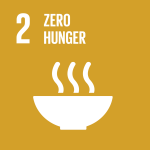
Photo:
- Community
- Municipality
- District
- National
- Local Governments
- National Governments
- Non-Governmental Organizations
- Private Sector Partners
- United Nations Development Programme (UNDP)
- UNOPS
651,800 direct beneficiaries in 8 municipalities: Koulé, Kokota, Niosomoridou, Diécké, Bignamou, Wassérédou, Gouécké, Mousadou
- Guinea Ministry of Environment and Sustainable Development
Expected outcomes
- Image

- Image

- Image

- Image

- Image

- Image

The Republic of Guinea is a coastal country situated in West Africa, on the Atlantic Coast, sharing its northern border with Guinea-Bissau, Senegal and Mali and its southern border with Sierra Leone, Liberia, and Ivory Coast. Its geographical location situates it at the crossroads of the major West African climatic groups, including the Guinean coastal climate, the Sudanese climate and the humid tropical climate at the edge of the equatorial climate.
The country is likely to be heavily impacted by climate change, and some effects are already being observed. For example, the seasonal distribution of rainfall and its intensity has changed in recent decades. Rising temperatures and changes in regional rainfall may continue to lead to flooding and have the potential to bring drought and extended dry spells in some regions.
The natural region of Forested Guinea, covering 23% of the country, is particularly fragile. Communities are especially vulnerable due to several deep-rooted factors such as; highest rate incidence of poverty in the country (~67% against a national average of 43,7 %); poor levels of financial and technical capacities of the farming communities and the institutions mandated to support rural development; dependence on rain fed agriculture (~97% of cultivated lands are rainfed) which is the primary source of livelihood and critical for food security; and poor agriculture/land management practices that contribute to degradation of agricultural landscapes, contribute to climate change and have negative effects on the overall crop productivity.
Forest Guinea, however, has a strong potential for agricultural development: out of 700,000 ha of agricultural lands that can be developed, including 400,000 ha of inventoried and geo-referenced lowlands, only 30,200 ha are partially developed and 1,000 ha in total water control in the finishing phase in Koundian.
The proposed long-term solution of this project is to strengthen the resilience and adaptive capacities of the most vulnerable local communities (with a focus on youth and women) in Forested Guinea, to face climate change and improve self-sufficiency in basic living needs of rural communities and create conditions to enable its replication.
The project results, corresponding indicators and mid-term and end-of-project targets in the project results framework will be monitored annually and evaluated periodically during project implementation. The project monitoring and evaluation plan will also facilitate learning and ensure knowledge is shared and widely disseminated to support the scaling up and replication of project results.
Project-level monitoring and evaluation will be undertaken in compliance with UNDP requirements as outlined in the UNDP POPP (including guidance on GEF project revisions) and UNDP Evaluation Policy. Additional mandatory GEF-specific M&E requirements will be undertaken in accordance with the GEF Monitoring Policy and the GEF Evaluation Policy and other relevant GEF policies.
Minimum project monitoring and reporting requirements, as required by the GEF:
- Inception Workshop and Report
- Annual GEF Project Implementation Report (PIR)
- Independent Mid-term Review (MTR)
- Terminal Evaluation (TE)
The project’s terminal GEF PIR along with the Terminal Evaluation report and corresponding management response will serve as the final project report package. The final project report package shall be discussed with the Project Board during an end-of-project review meeting to discuss lesson learned and opportunities for scaling up.
- UNDPJulien SimeryRegional Technical Adviser, Climate Change Adaptation

